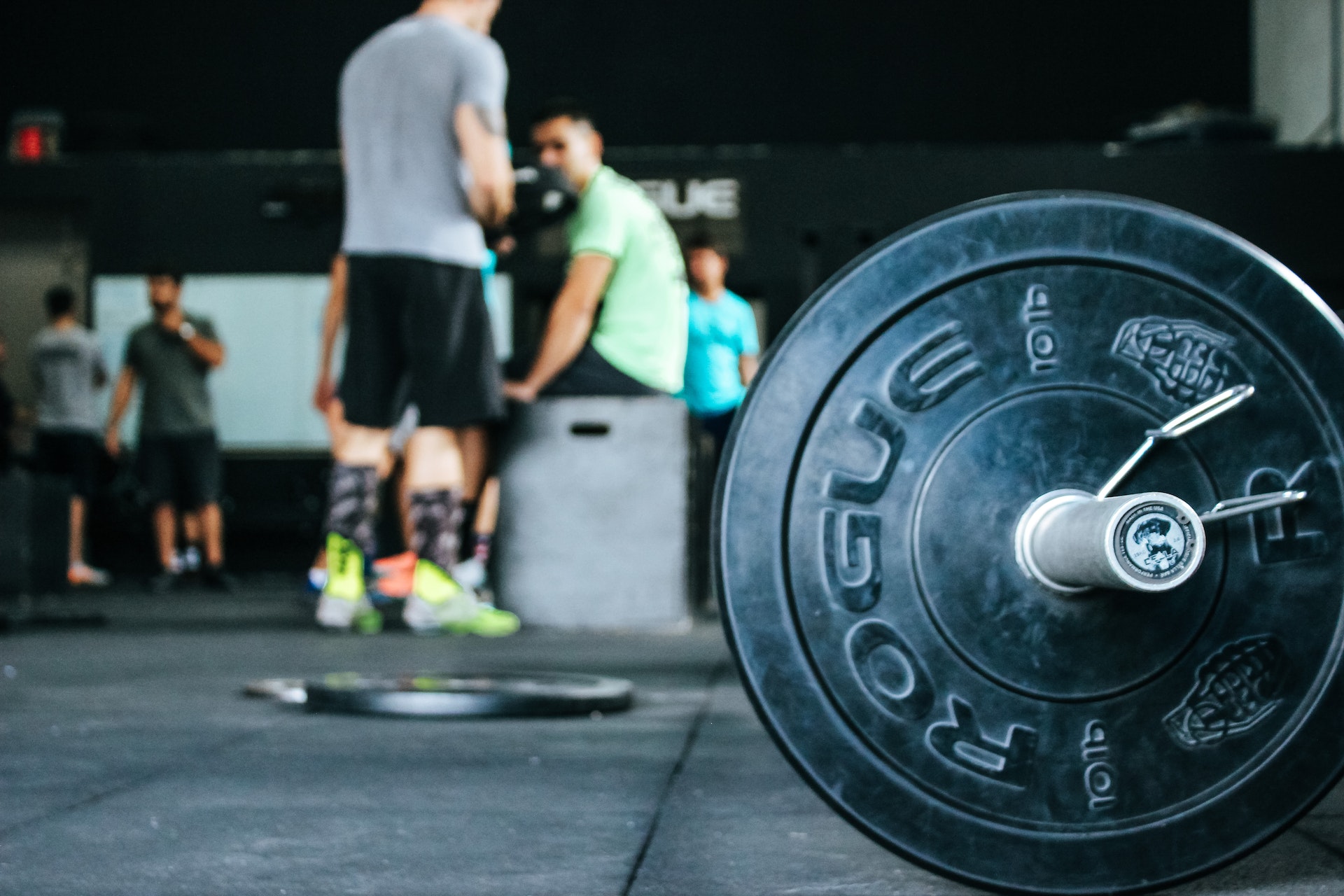Strength training: More important by the day!
We think that growing old means becoming weak. But fear not – it’s never too late to add good strength training to your routine!
Strength training: Why it gets more important as we age
Are you having issues doing things that you used to easily do five years ago? Feeling extra tired or sore after exercise? Maybe you’re getting bored with the cardio routine you’ve been doing for decades. Especially at older ages, adding strength training to our fitness routine can make a big difference. A good strength training session is getting more important every single day!

The biggest misconception about strength training
Strength training? The name implies that it’s for young, muscular people trying to get the biggest biceps, but that’s not true. You may have heard about strength training from the media, your social network, or online. It’s become very popular in recent years. Strength training has been shown to have many fitness benefits. It can help you reduce body fat and build muscle. It also has many benefits outside of fitness. It can help to maintain bone density, improve balance, and improve sleep for people of all ages.
Strength training is especially beneficial for seniors to avoid osteoporosis, manage diseases, and reduce the risk of falls.1 With all of these benefits, strength training can help us maintain our independence as we age.
But what exactly is strength training?
Strength training is simply any exercise that trains our muscles to increase strength and endurance. 2 We have all heard the saying, “use it or lose it.” This idea can help us think about strength training as we age. The scientific term for the natural decline of muscle with age is sarcopenia. It begins once we are in our 40s. If we do not challenge our muscles to gain strength, they will slowly become weaker with age. 3 Without strength training to interrupt this process, muscle loss can lessen our ability to take care of ourselves. So, why isn’t everyone doing it?

Let’s grab that dumbbell!
Many people are wary of strength training due to the belief that it is bad for their joints. It is actually the opposite! There have been many studies that show that strength training actually helps joints and the muscles around them. Even for people with arthritis, physical exercise can help stiff joints and maintain range of motion. 4 Strength training makes your joints happy! It is even recommended by the Department of Health and Human Services. They recommend exercising all major muscle groups at least twice a week. 2 So, let’s grab that dumbbell, barbell, kettlebell, or if you don’t have access to those, a backpack filled with books, and get started!
What can strength training do for me?
First, let’s set the scene. Imagine feeling more in shape. What doors would this open? Maybe you wanted to participate in community events. But are you worried you wouldn’t be able to do the physical work? With stronger muscles, better balance, and more stable joints, we can focus on the things in our lives that really matter. Being free of mobility issues can free up time and effort to focus on other things. We can continue to invest in quality relationships, get in touch with our health, and build a community of positivity around us.
A big benefit for your mental health
Not to mention what it does for your mental health. Once you begin to feel stronger physically, you feel mentally stronger as well. And when you get used to doing hard things when you strength train, you take that approach to challenges in life, raising your overall confidence because you know that you can overcome hard things!
Do it together with us!
Strength training can be a powerful way to make positive changes to our health, wellness, and even happiness. We are soon hosting the Happy Nation Games, a free community wellbeing event where you can try out strength training workouts from fitness pros.
To be notified, follow us on Instagram or sign up on our website to get an email notification.
Don’t forget these key elements
- Safety. If you are starting a strength training program for the first time or in a long time, it’s always best to talk to your doctor. Safety comes first and strength training may not be right for people with certain health issues.
- Proper form. If you are unsure about how to do an exercise, ask a personal trainer in your gym, look for helpful resources online, or consider joining a class that will help you learn the basics.
- Start slow. Strength training is all about slowly and consistently increasing weight. Start with lower weights to avoid injury. Trust us, don’t be too ambitious too quickly with your weights.
- No pain. Strength training should never be painful. You may have some tight or sore muscles one or two days later, but pain that keeps you from the activities you like to do means that you may have attempted too much.

Strength training: More important by the day!
Strength training: Why it gets more important as we age
Are you having issues doing things that you used to easily do five years ago? Feeling extra tired or sore after exercise? Maybe you’re getting bored with the cardio routine you’ve been doing for decades. Especially at older ages, adding strength training to our fitness routine can make a big difference. A good strength training session is getting more important every single day!

The biggest misconception about strength training
Strength training? The name implies that it’s for young, muscular people trying to get the biggest biceps, but that’s not true. You may have heard about strength training from the media, your social network, or online. It’s become very popular in recent years. Strength training has been shown to have many fitness benefits. It can help you reduce body fat and build muscle. It also has many benefits outside of fitness. It can help to maintain bone density, improve balance, and improve sleep for people of all ages.
Strength training is especially beneficial for seniors to avoid osteoporosis, manage diseases, and reduce the risk of falls.1 With all of these benefits, strength training can help us maintain our independence as we age.
But what exactly is strength training?
Strength training is simply any exercise that trains our muscles to increase strength and endurance. 2 We have all heard the saying, “use it or lose it.” This idea can help us think about strength training as we age. The scientific term for the natural decline of muscle with age is sarcopenia. It begins once we are in our 40s. If we do not challenge our muscles to gain strength, they will slowly become weaker with age. 3 Without strength training to interrupt this process, muscle loss can lessen our ability to take care of ourselves. So, why isn’t everyone doing it?

Let’s grab that dumbbell!
Many people are wary of strength training due to the belief that it is bad for their joints. It is actually the opposite! There have been many studies that show that strength training actually helps joints and the muscles around them. Even for people with arthritis, physical exercise can help stiff joints and maintain range of motion. 4 Strength training makes your joints happy! It is even recommended by the Department of Health and Human Services. They recommend exercising all major muscle groups at least twice a week. 2 So, let’s grab that dumbbell, barbell, kettlebell, or if you don’t have access to those, a backpack filled with books, and get started!
What can strength training do for me?
First, let’s set the scene. Imagine feeling more in shape. What doors would this open? Maybe you wanted to participate in community events. But are you worried you wouldn’t be able to do the physical work? With stronger muscles, better balance, and more stable joints, we can focus on the things in our lives that really matter. Being free of mobility issues can free up time and effort to focus on other things. We can continue to invest in quality relationships, get in touch with our health, and build a community of positivity around us.
A big benefit for your mental health
Not to mention what it does for your mental health. Once you begin to feel stronger physically, you feel mentally stronger as well. And when you get used to doing hard things when you strength train, you take that approach to challenges in life, raising your overall confidence because you know that you can overcome hard things!
Do it together with us!
Strength training can be a powerful way to make positive changes to our health, wellness, and even happiness. We are soon hosting the Happy Nation Games, a free community wellbeing event where you can try out strength training workouts from fitness pros.
To be notified, follow us on Instagram or sign up on our website to get an email notification.
Don’t forget these key elements
- Safety. If you are starting a strength training program for the first time or in a long time, it’s always best to talk to your doctor. Safety comes first and strength training may not be right for people with certain health issues.
- Proper form. If you are unsure about how to do an exercise, ask a personal trainer in your gym, look for helpful resources online, or consider joining a class that will help you learn the basics.
- Start slow. Strength training is all about slowly and consistently increasing weight. Start with lower weights to avoid injury. Trust us, don’t be too ambitious too quickly with your weights.
- No pain. Strength training should never be painful. You may have some tight or sore muscles one or two days later, but pain that keeps you from the activities you like to do means that you may have attempted too much.